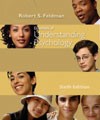 |
1 |  | 
Cochlear implants can help certain forms of deafness produced by damage to the |
|  | A) | bones of the middle ear |
|  | B) | auditory canal. |
|  | C) | hair cells. |
|  | D) | cochlear fluid. |
 |
 |
2 |  | 
Which of the following structures is related to our sense of balance? |
|  | A) | otoliths |
|  | B) | cochlea |
|  | C) | basilar membrane |
|  | D) | stirrup |
 |
 |
3 |  | 
Most psychologists believe that there are just ______________ basic receptor cells for taste. |
|  | A) | two |
|  | B) | four |
|  | C) | six |
|  | D) | eight |
 |
 |
4 |  | 
The gate-control theory of pain suggests that |
|  | A) | nerve receptors in the spinal cord lead to specific area of the brain related to pain. |
|  | B) | pain perception is actually a combination of visual and auditory reception. |
|  | C) | there are no areas in the brain specifically related to pain, just a combination of other sensitive areas. |
|  | D) | pain is a touch reflex controlled by the spinal cord. |
 |
 |
5 |  | 
According to ______________, when we encounter a stimulus, our brain's perceptual processing system initially responds to its component parts. |
|  | A) | opponent-process theory |
|  | B) | place theory |
|  | C) | feature analysis |
|  | D) | top-down processing |
 |
 |
6 |  | 
Depth perception is due largely to the fact that |
|  | A) | we have perceptual constancy. |
|  | B) | we have two eyes. |
|  | C) | motion parallax is universal. |
|  | D) | binocular disparity does not occur in humans. |
 |
 |
7 |  | 
The change in position of the retinal image as the head swings from side to side is called |
|  | A) | relative size. |
|  | B) | binocular disparity. |
|  | C) | linear perspective. |
|  | D) | motion parallax. |
 |
 |
8 |  | 
The visual illusion known as the "devil's tuning fork" is |
|  | A) | seen similarly by people of all cultures. |
|  | B) | difficult for rural Africans to copy. |
|  | C) | copied with great difficulty by Western people. |
|  | D) | evidence for the universality of perception. |
 |
 |
9 |  | 
The weakest detectable physical stimulus is called the |
|  | A) | just noticeable difference. |
|  | B) | difference threshold. |
|  | C) | sensory noise factor. |
|  | D) | absolute threshold. |
 |
 |
10 |  | 
The ______________ is the dark hole in the center of the iris. |
|  | A) | cornea |
|  | B) | lens |
|  | C) | pupil |
 |
 |
11 |  | 
An adjustment in the lens shape in order to keep images in sharp focus is called |
|  | A) | lens-image inversion. |
|  | B) | top-down processing. |
|  | C) | accommodation. |
|  | D) | optical adaptation. |
 |
 |
12 |  | 
The fact that hair cells at different sites on the basilar membrane are stimulated by their own preferred ranges of sound frequencies supports the ______________ theory of the brain. |
|  | A) | frequency |
|  | B) | otolith |
|  | C) | place |
|  | D) | gate-control |
 |
 |
13 |  | 
The overriding Gestalt principle is |
|  | A) | completion. |
|  | B) | complexity. |
|  | C) | simplicity. |
|  | D) | specificity. |
 |
 |
14 |  | 
When the sensory nervous system is sensitive to small differences, the just noticeable difference will be |
|  | A) | small. |
|  | B) | moderate. |
|  | C) | impossible to specify. |
|  | D) | large. |
 |
 |
15 |  | 
The proper sequence of structures that sound passes when it enters the ear is the following: |
|  | A) | oval window, eardrum, stirrup, cochlea |
|  | B) | cochlea, stirrup, eardrum, oval window |
|  | C) | stirrup, eardrum, oval window, cochlea |
|  | D) | eardrum, stirrup, oval window, cochlea |
 |



 2002 McGraw-Hill Higher Education
2002 McGraw-Hill Higher Education

 2002 McGraw-Hill Higher Education
2002 McGraw-Hill Higher Education